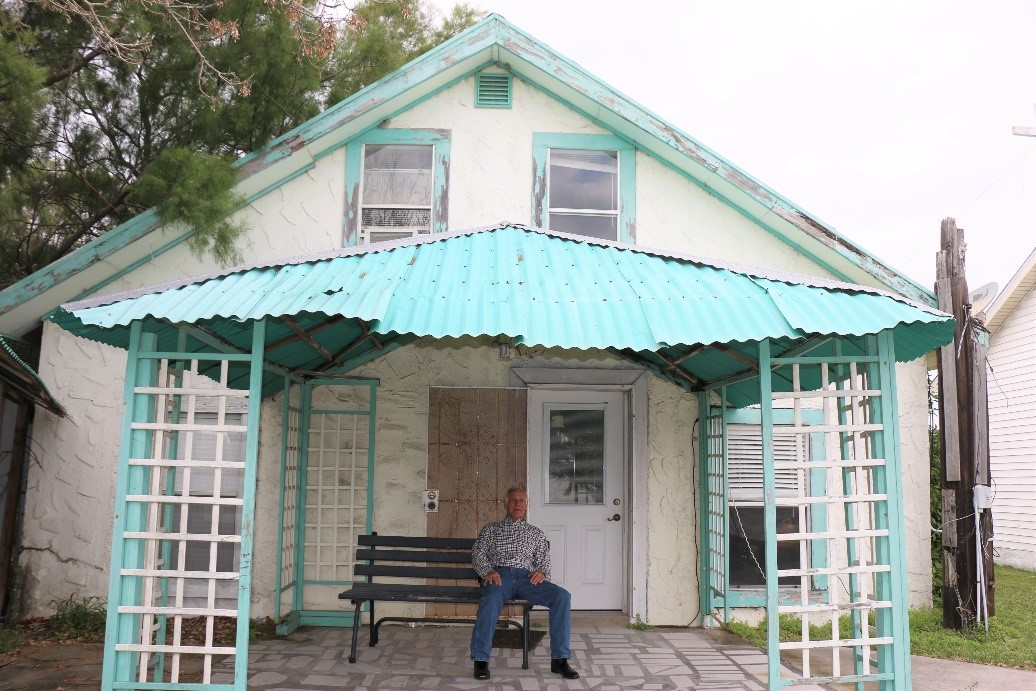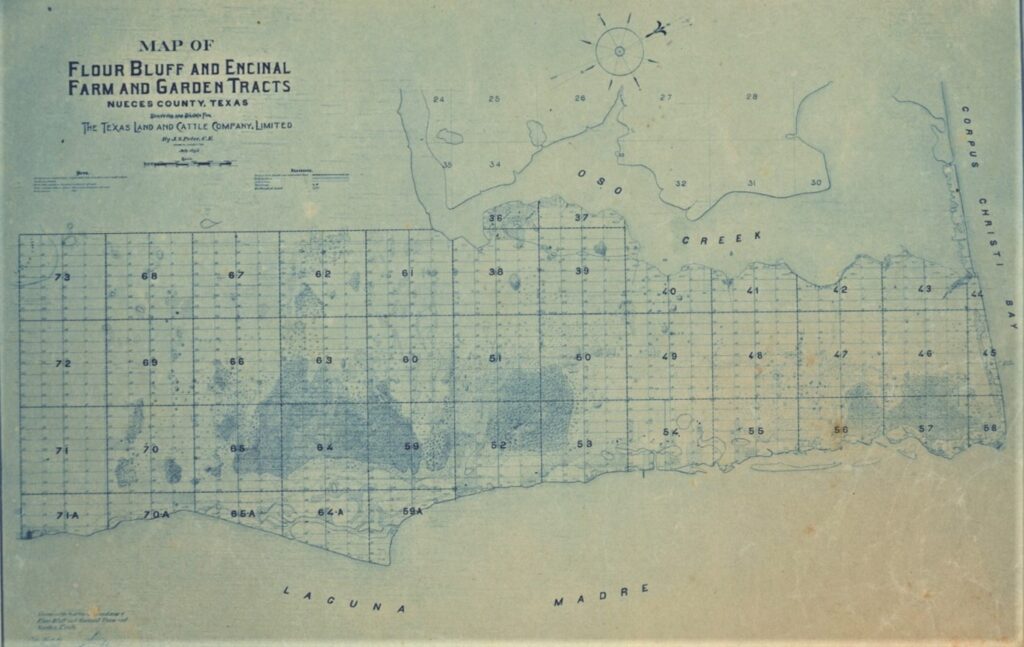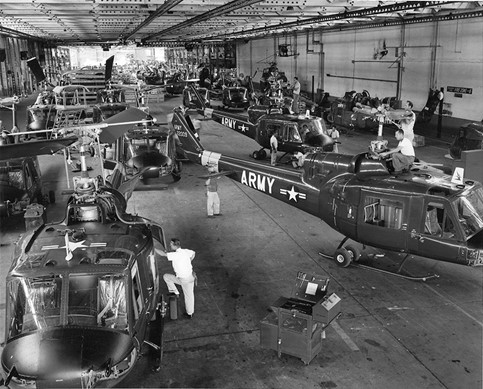[spacer height=”20px”]
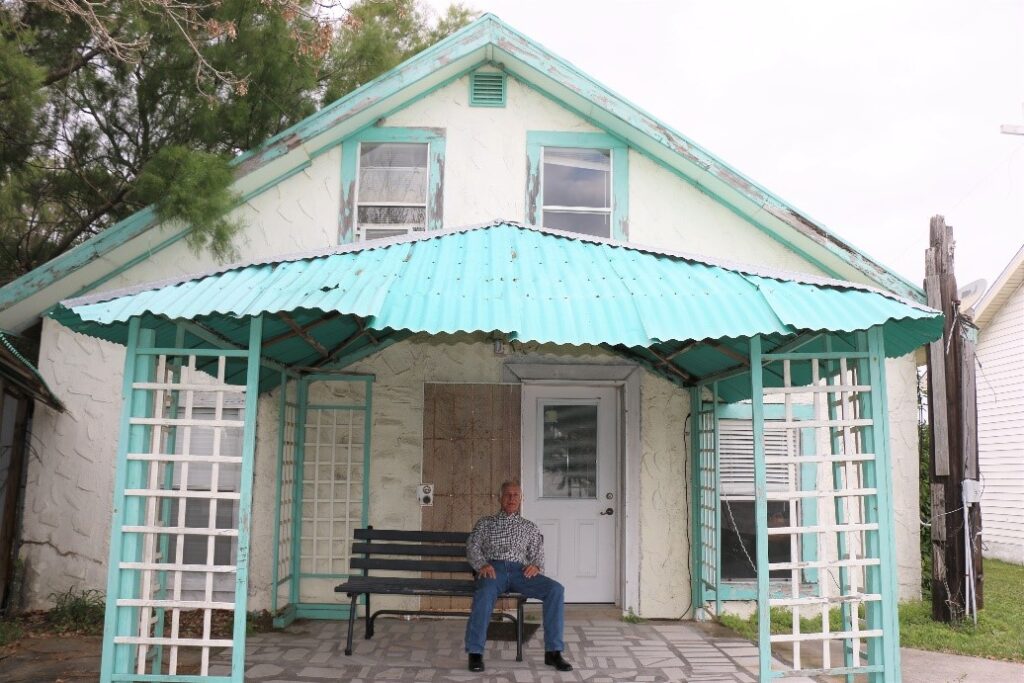
Miles Graham sits on the front porch of the house he grew up in. The property is now owned by Grace Community Church. (Photo credit: Shirley Thornton)
To preserve the rich history of Flour Bluff, The Paper Trail News, runs historical pieces and personal accounts about the life and times of the people who have inhabited the Encinal Peninsula. The stories gleaned from interviews held with people who remember what it was like to live and work in Flour Bluff in the old days are intended to connect the past with the present.
[spacer height=”20px”]
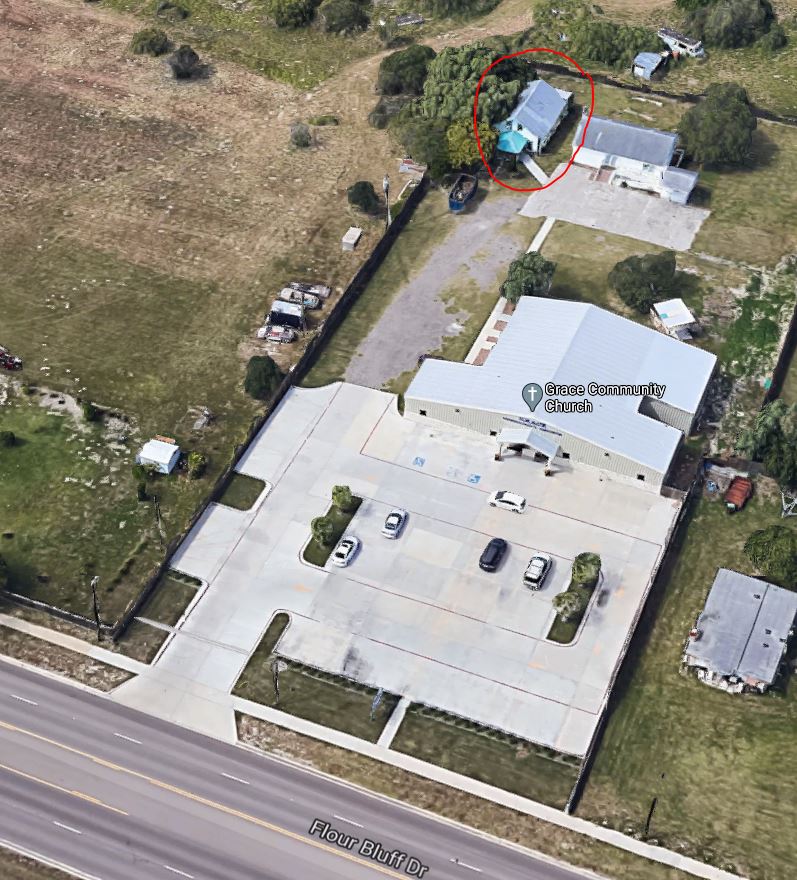
The Graham home where Miles grew up still sits in the back left corner of the Grace Community Church property. (Photo: Google Maps satellite photo)
Nestled behind Grace Community Church on Flour Bluff Drive sits the house that Tom Graham built of blocks he made himself. His son, Miles Graham, walked around his childhood home, remembering stories of his youth, speaking of what it was like to be the son of the man known as the “Cowboy of Flour Bluff”, and telling what it was like growing up in Flour Bluff at a time when the little community almost became its own town.
“This house didn’t get air conditioning until I was grown and had my own family,” Miles said. “Dad had asthma, and he finally got a window unit for the room he and mom slept in. That had to have been in the late seventies.”
Miles told of how the floor in his room was not the same level as the bedrooms on either side of his. “Dad backed a cement truck up to the house, opened the window, and filled in the floor of my room,” he said.
According to Miles, parts of the house were being built about the same time as the base. “A lot of the material Dad used was scrap material from the base,” he explained. “We had an outside stairway to get you to the upstairs, and we got our water from a well that was only about 32 feet deep. When I worked for Urban Engineering, I ran across an article from the 1800s that told of how the property in the Flour Bluff and Encinal Farm and Garden Tracts, which stretched from Everhart to the Laguna Madre, were sold in 20-acre tracts. The tracts west of the Oso sold for $6 an acre. The tracts east of the Oso, in Flour Bluff, sold for $11. The reason it was more expensive out here is that you could get shallow water wells.”
[spacer height=”20px”]
Miles explained that most people back then had water wells in Flour Bluff, but a more reliable source of water was available before annexation by the city. “There used to be a pumping facility with water storage tanks where Stripes at Flour Bluff Drive is now. It was a completely separate water district from the city,” said Miles. “When we were annexed, the city had to cut a deal to buy all those facilities. There’s still a county tank at the county park on the island like the ones we had here. Everything was pressurized by pumps until the city came in, and the tower went up.”
The Graham house had natural gas in the house. “Exxon had a gas well on our property just south of the house. We had a line that ran from that well to our house. Dad was madder than hell when they shut it off, and he had to run a gas line all the way out to the road,” said Miles.
Tom Graham found a way to combine the old ways with the new to use the 60 acres where the house set to make a living. He not only farmed and ranched on it, he raised hogs. “During WWII, this was a huge hog farm. Dad had a contract with the Navy. All these bases were open and active. Dad picked up the garbage from the mess halls to feed the hogs. Those guys would throw their utensils in the trash with their food. I was probably 7 or 8 years old before I realized that not every piece of silverware in the world had USN on it,” Miles said, laughing. “I would bet that back then half of the silverware in Flour Bluff School had the USN stamp.”
[spacer height=”20px”]
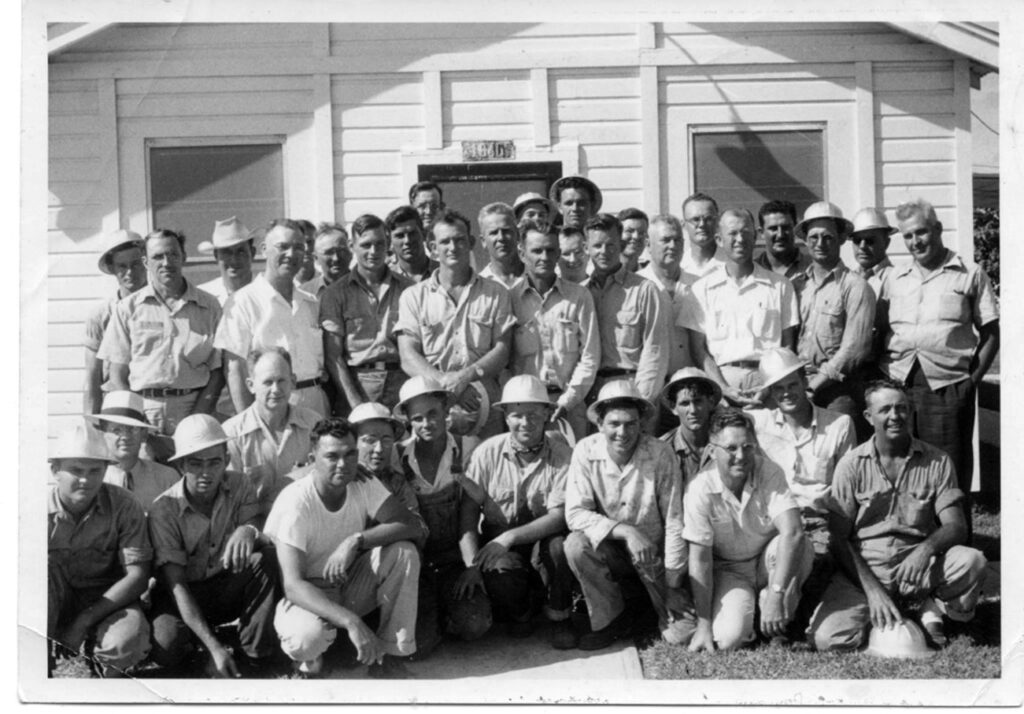
Oilfield workers outside the main office of Humble Camp in Flour Bluff. The camp sat near the South Gate of NAS Corpus Christi.
[spacer height=”20px”]
Tom also picked up garbage from local businesses and the oil field camps to feed his thousands of hogs. “Most of the oil and gas activity out here was Exxon or Humble Oil related,” said Miles. “When I was a kid, it seemed like everybody out here was somehow connected to Humble Oil. I can remember going to the old Humble Camp, where Marina Village sits outside the south gate of the base, to pick up trash with my dad. My wife, Sandy, lived in the old Humble Camp. Her dad was an accountant for Humble. We had a standing joke that always made us laugh. I would ask her what she thought her dad would have said if she had told him that she was going to marry that kid who was hanging on the side of the garbage truck. I worked that job all the way into high school.”
The oil companies brought more than jobs to Flour Bluff. “All of the roads back then were shell roads made from oyster shell dredged out of the bay,” said Miles. “You didn’t see caliche down here. Most of the roads were put in by the oil companies. Glenoak was the last of the east-west roads improved. It was dirt and shell well into the sixties, but it had a good layer of shell. A man named Stanley, who worked for Exxon, lived on Glenoak, so we thought he might have had something to do with that road being a little better than the others. The oil companies even provided housing. Humble Camp was specifically for the families of Exxon employees. When the camp closed, they gave the families the option of taking their houses with them. Many of them are still all over Flour Bluff.”
“The Bluff had mostly gas wells, and they were all over!” said Miles. “My father-in-law told me that all the offices were at Humble Camp, and they had field guys, gaugers, who would go out and check the wells in the Laguna Madre. He said they’d come back in and report that the redfish were running. They’d shut down the office, and everybody would go fishing!”
Miles spoke of how NAS Corpus Christi also helped the community even though the war was over. “A lot of Flour Bluff people worked at O & R, which stood for Overhaul and Repair, on the base,” Miles said. “My older brother, R. D. Holloway, worked out there like so many people in this area did. When it closed, it was a major economic event in Corpus Christi. Years later, it came back as ARADMAC and then changed to CCAD, which continued to offer jobs.”
[spacer height=”20px”]
[spacer height=”20px”]
Sources: In 1998-1999, Cassandra Self-Houston, great granddaughter of Florine Jeletich Self and John Self, conducted interviews of members of the first Flour Bluff families still living in Flour Bluff at that time. The Graham story was gleaned from these interviews and multiple Corpus Christi Caller-Times, The Alice News, and Flour Bluff Sun articles written about Dr. Robert Graham and his family. More specific dates and information came from cards and letters of family members and from interviews with Miles Graham and Sherry Holloway conducted in 2019.
_________________________________________________________________
Be sure to visit The Paper Trail News to read stories from other longtime residents of Flour Bluff. The editor welcomes all corrections or additions to the stories to assist in creating a clearer picture of the past. Please contact the editor at [email protected] to submit a story about the early days of Flour Bluff.
